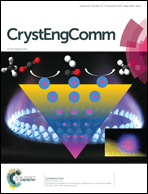Control of the growth of electrodeposited zinc oxide on FTO glass
Abstract
In this work, zinc oxide (ZnO) was directly electrodeposited onto fluorine-doped tin oxide (FTO). The physical and chemical heterogeneity of FTO have contributed to important and exploitable results. In fact, the doping of tin dioxide (SnO2) with fluorine distorts its rutile crystal lattice. This distortion leads to contraction mechanical constraints on the network contributing to a rough surface morphology. Moreover, the nano-roughness of the FTO surface impedes the epitaxial growth of ZnO nanorods. However, this roughness combined with the chemical heterogeneity of the FTO surface leads to favored growth sites. This can be explained by the presence of fluorine atoms in the SnO2 network with a stronger electronegativity which attracts the ZnO nuclei. The accumulation of many nuclei around the same electronegative spot contributes to the development of nanoflower-like structures or tilted nanorods. In such a case, the non-polar facets of ZnO are exposed and the electrodeposited film is highly hydrophobic. The growth of ZnO onto FTO was studied by varying four main parameters of the synthesis: time of electrodeposition, temperature, concentration of the Zn2+ precursor and concentration of KCl. The influence of those parameters on the shape, size, growth mechanism, and density of the ZnO electrodeposit was discussed. Thus, when the concentration of the Zn2+ precursor increases from 0.1 to 5 mM, the nanorods' size decreases but the density of these nanostructures increases leading to their organization in nanoflowers. However, the increase of the KCl concentration from 0.5 to 4 M causes a change of the ZnO nanostructure shape from hexagonal nanorod arrays to nanopencil arrays and also a significant decrease of density accompanied with a significant increase of the ZnO nanostructure size whose diameter varies from 90 to 200 nm. Furthermore, the time of electrodeposition is a key parameter influencing the height of ZnO nanorods. Finally, good crystallization of ZnO is observed at a high temperature (about 80 °C).



 Please wait while we load your content...
Please wait while we load your content...